Mazda CX-30 Vs Mazda CX-50 Comparison: The Inbetweeners

With SUVs continuing to dominate the sales charts, automakers are taking a Baskin-Robbins-style, 31-flavor approach to their lineups.
Mazda’s main flavor in this class is the CX-5, a great-driving compact crossover that now occupies fourth place on the sales charts. That success makes it ubiquitous, however, and Mazda now offers two additional flavors on either side of its best-seller.
The CX-30 came first, a slightly smaller offering with a classy interior. It’s a better buy than the equivalent sub-compact Mercedes. Now here comes the CX-50, which takes Mazda in a more rugged direction. It’s a little larger than the CX-5, yet all three offer same-but-different driving experiences. With this ability to tailor your ride to your exact needs, we spent a week with both of the double-digit offerings to figure out what sets them apart.
Get a Quote on a New Mazda CX-30 or CX-50Interior and Cargo Space
CX-50: The CX-50 interior design team had to walk a fine line: keep the classy feel that has catapulted Mazda past every mainstream automaker, but mix in a healthy dash of ruggedness to attract the Outback crowd. Big vertical air vents convey strength. The dashboard is all straight lines now too, with a welcome line of contrasting cross-hatched stitching running right around the cockpit.
Unfortunately, on the hunt for Outback buyers, material quality has taken a step backwards. The soft-touch dashboard has a shine to it that you won’t find in the CX-30, and the door handles in particular feel brittle.
The front seats are comfortable and supportive on longer drives. They look great, too. Bonus points for more substantial shoulder support, and a wide range of power-adjustability. Even with the low roofline, there’s plenty of headroom for adults up front. That rakish profile does limit outward visibility, however.
Rear-seat accommodations are unsurprisingly more generous in the larger vehicle. The most noticeable difference is the 3.5 inches (89 millimeters) of extra legroom. Mazda says the CX-50 has less headroom, but slotting both myself and managing editor Mike Schlee back there, it sure doesn’t feel like it. The larger model’s roofline doesn’t dip until well after the seats, you see. The CX-50 is nearly half a foot wider than its little brother, yet shoulder room is practically identical in both—and it gives up an inch in hip room, in both rows, to the CX-30.
The cargo-carrying advantage is even clearer for the CX-50. The lip is the same height on both models, but the floor is flat in the CX-50. At 31.4 cubic feet (889 liters) with the seats up, it’ll swallow six standard carry-ons below the cargo cover. Drop the seats and the space expands to 56.3 cubes (1,594 L); comfortably more than the CX-30, but still well shy of the 75.7 cu-ft (2,144 L) found in a Subaru Outback.
CX-30: The CX-30 cockpit remains one of the very best interiors in a vehicle starting under $40,000. The wraparound design, minimalist ornamentation, and smooth shapes combine for a space that’s far more stylish than the price tag suggests. The way the dashboard layers drape over one another is organic. Even the asymmetric infotainment surround is the sort of attention to detail that Mazda excels at.
That all being said, we were surprised that the piano black trim on the driver-side door handle had popped loose during our test. It clicked back into place
In this particularly excellent shade of red, the CX-30 front seats are as good to sit in as they are to look at. They’re quite low, which plays to my preferences just great, but those looking for a commanding SUV view ahead will likely be disappointed. Like the CX-50, sightlines are merely okay, with a thick C-pillar hampering rearward visibility. As a concession to its place in the lineup, the CX-30 also does without any power adjustability on the passenger side.
The CX-30 has a tight rear seat, even for its class. Legroom is fine, but the stylish profile eats into headroom. Officially there’s 38.3 inches (973 mm) of the stuff, but both of us make contact with the headliner. The door opening is also smaller than the CX-50’s, and less square.
The CX-30 offers only 20.2 cubic feet (572 L) of storage space, and the space is just enough to slot a standard carry-on length-wise. Drop the seats and there’s 45.2 cubes (1,280 L) to play with.
SEE ALSO: Mazda CX-5 vs Nissan Rogue Comparison: Heart and HeadBottom Line: If sheer square footage is your top priority, the CX-50 is the obvious go-to. We still prefer the CX-30’s cleaner design though, and its material quality is more consistent.
Tech and Features
CX-50: The CX-50 uses a larger, 10.25-inch infotainment screen that only sometimes allows for touch control. (An 8.8-inch screen is standard.) Why only sometimes? Well, the (wireless) Apple CarPlay and Android Auto allow for it, you see. The native system still doesn’t, as Mazda’s studies have shown touchscreens are distracting to drivers. This seeming concession does address one of our long-standing complaints about the system though, that passengers shouldn’t have to deal with the center console-mounted rotary dial. They can just poke away now, right?
Nope. The touchscreen functionality is only available when the CX-50 is stationary. And even when it is active, the screen is set so far away—for less distraction for the driver, you see—that it’s hard to reach. So close, yet so far.
Weird user interface flip-flopping aside, the Mazda infotainment system is simple to navigate. The rest of the CX-50 tech suite is straight-forward too, with a clever 7.0-inch screen blending into the instrument panel, and a useful head-up display keeping pertinent info right in view. The 12-speaker Bose sound system pumps out solid tunes. Front-row folks get both heat and ventilation in the seats, plus power adjustability for the passenger and a memory function for the driver. The outboard rear seats have heating, too. One major advantage: a wireless charger, which is admittedly an option on the CX-30.
Mazda comes correct on the safety front, with the full suite of automated emergency braking, lane-keep assist, auto high beams, blind-spot monitoring, rear cross-traffic alert, traffic sign recognition, and adaptive cruise control. The CX-50 also includes a 360-degree camera and Mazda’s Traffic Jam Assist, which combines ACC and lane-keep for an easier highway experience.
CX-30: The CX-30 comes with the same 8.8-inch screen you’ll find in the base CX-50. It still uses a wired tether for phone mirroring, and doesn’t offer the partial touch functionality of big brother. So the rotary dial experience is the same here as it is there.
In fact, the vast majority of the CX-30 tech experience is identical, just in a smaller environment. Head-up display? Check. A dozen Bose speakers? Check. 10-way power adjustable driver’s seat? Check. The CX-30 does give up ventilated front seats, heated rears, and a wireless charger, but it’s also thousands cheaper.
Crucially, the safety suite is identical, now that Mazda has made the 360-degree camera, Traffic Jam Assist, and front parking sensors available on the CX-30. It earns a full five-star rating from the NHTSA, and a Top Safety Pick+ designation from the IIHS, both achievements we expect from the CX-50 once it’s tested.
SEE ALSO: Mazda CX-30 vs Mercedes-Benz GLA Comparison: Lofty AspirationsBottom Line: From an infotainment perspective, these are essentially the same, as the CX-50’s semi-touchscreen is a half-measure at best. The CX-50 nets a few extra creature comforts you’d expect at its price range, while the CX-30 is one of the cushiest (and safest) options in the sub-compact class.
Powertrain, Driving Feel, and Fuel Economy
CX-50: Like just about everything Mazda makes with more than two seats, the CX-50 comes with a choice of two 2.5-liter engines: one naturally aspirated, and one turbocharged. We have the turbo motor here, a delightfully torquey unit rated at 227 horsepower and 310 pound-feet of torque on 87 octane fuel. Have it drink from the premium tap, however, and the CX-50 throws down 250 hp and 320 lb-ft. All that power routes through a six-speed automatic to a standard i-Activ all-wheel drive system with G-Vectoring Control that is too clever to explain in detail here. Basically, it constantly and imperceptibly alters the torque split, slightly reducing the power to the front wheels on turn-in to minimize understeer and improve steering feel.
However it does it, it works. The CX-50 steers clean and true, making it a cinch to place on the road. There are selectable drive modes to either amp up the drivetrain (Sport) or prime it for low-speed, low-grip maneuvers (Off-Road).
It just rides so stiff. The CX-50 can feel harsh on broken pavement, where its little sibling floats along. I find it acceptable, a reminder that this Mazda has more on-tarmac chops than the comparatively sedate Subaru. Mike’s harder on it. “Took more effort than should be required for a small SUV,” read his notes, “‘like it wants to masquerade as a sports car. Brakes, steering, throttle, suspension all too stiff.”
The EPA rates the CX-50 Turbo at 23 mpg city and 29 mpg highway, for a combined 25 mpg. Canadian figures are 10.4, 8.1, and 9.4 L/100 km, respectively.
CX-30: The CX-30 we have here has the same Turbo engine, and the same 2.5-liter nat-asp is standard. It also comes with standard AWD with G-Vectoring Control. As effortless as the CX-50 is around town, the CX-30 is carrying 408 fewer pounds (185 kg), so it’s even quicker. The combination of turbocharging and large displacement (for a four-pot) means there’s always ample torque to surf around on. Mazda is playing with a gear or two less than other cars in these classes, and having this much torque masks that disadvantage.
The CX-30 has a softer, cushier ride than its big brother. It’s not sloppy by any means; it just doesn’t have to satisfy off-roading demands, or tow as much, so there’s more give in the suspension. We can’t discount the smaller, 18-inch wheels, either. They’re wrapped in narrower tires, which combined with the tidier dimensions and lighter curb weight make the CX-30 genuinely fun to fling around in Sport mode.
On the highway, the CX-30’s smaller frontal area keeps it impressively quiet. The high-speed refinement is what truly separates it from the rest of the sub-compact class.
As it turns out, size doesn’t matter, at least at Mazda, and at for fuel consumption. The CX-30 posts 1 mpg worse in the city yet 1 mpg better on the highway, for the same 25 mpg combined figure as the CX-50. Canada’s more precise measurements do show a fractional difference: 10.5, 7.9, and 9.3 L/100 km, respectively.
Bottom Line: It’s the same engine, so it’s a wash there. The CX-50 has a stiffer ride, the price one pays for those big wheels, plus added off-road and towing capability. The CX-30 is smoother yet also more fun.
Styling
CX-50: The CX-50 exterior is defined, much like the interior, by horizontal lines. The traditional Mazda shield grille is stretched wide, with simple, rectangular headlights sitting under the largest hood Mazda has ever produced. Squared-off plastic cladding frames every wheel, with swollen arches contributing to the CX-50’s extra width. Matte metallic highlights the faux skidplate on the chin, and the roof rails up top. Mazda’s played with proportions here too, stretching the vehicle out and flattening the roof. It’s not as obviously wagon-esque as the Outback though—it feels more substantial than that. The 20-inch wheels look great, as well.
In this new Zircon Sand metallic, the CX-50 successfully slots Mazda into a more rugged part of the market. During my weekend with it, numerous strangers came up to either ask about it or simply admire the color. It should be a hit.
CX-30: We don’t often see Mazda press cars in shades other than Soul Red or Polymetal Gray. We rail against the abundance of silver cars plying our roads, but this low-key paint highlights the handsome aspects of the CX-30. It’s a lighter, softer design than the butch CX-50, with angular headlights and a distinct lack of hard creases along its flanks. Yeah, the thick plastic cladding is still awkward, and we’re over the black wheel fad—these ones are part of the upgrade to the turbo engine.
What works for the CX-30 is how un-SUV it is. This is a Mazda3 on stilts, really, and using the prettiest compact car out there as a base is a smart move.
Bottom Line: No matter which of these rides you prefer—tastes are subjective—can we all agree that Mazda has the best-looking mainstream lineup? Yeah? Good.
SEE ALSO: 2023 Mazda CX-50 First Drive Review: Destination OutbackPricing and Value
CX-50: The CX-50 lineup starts at $28,025 in America, including destination. The 2.5 S trim includes niceties such as AWD, LED headlights, 17-inch alloys, and the 8.8-inch infotainment with wireless phone mirroring. As equipped, this Canadian-spec tester would ring in at $43,170, as it’s the equivalent of the top-shelf Turbo Premium Plus. The only option is the paint.
In Canada, the CX-50 lineup is much simpler, with the mid-level GS-L trim acting as the “base” at $39,850 CAD including destination. That one sticks to the 2.5-liter as well, so those wanting turbo power have to graduate to the GT you see here. From there, the turbo adds $2,500 CAD, plus the $250 CAD paint and $200 Terracotta leather interior, for a grand total of $47,750 CAD.
CX-30: For 2022, the CX-30 2.5 S now offers AWD as standard, and rings in at $23,725 including destination. That includes the same engine as you’ll find in the CX-50, 16-inch wheels, rain-sensing wipers, LED exterior lighting, and an 8.8-inch infotainment (with wired pairings). It’s impossible to exactly recreate our Can-spec tester south of the border, as the silver and red combo isn’t available on the top 2.5 Turbo Premium Plus ($35,925).
In Canada, the lineup is a little different. The entry-level GX model comes with a smaller 2.0-liter engine, enabling the CX-30 to maintain an affordable $28,300 CAD price. Our loaded tester includes the Advanced Visibility Package ($800 CAD) and red leather interior (a steal at $200 CAD), for a grand total of $39,850 CAD.
SEE ALSO: Ford Bronco Sport vs Mazda CX-50: Which Rugged Compact SUV is Right for You?Bottom Line: It should come as no surprise that the CX-30 has the price advantage. That said, in America, there’s not much space between the two, especially considering the added content and size of the CX-50. Meanwhile in Canada, it’s extremely convenient that the entry point for CX-50 ownership is exactly the same amount as our loaded CX-30 tester.
Verdict: Mazda CX-50 vs Mazda CX-30 Comparison
In the end, there weren’t a lot of surprises in this family face-off. The CX-30 is better suited to empty-nesters or those yet to start a family, being smaller and more affordable. The CX-50 offers up more space and a few tech advantages. All of this was expected.
It was the driving experiences that set these two apart. In its attempt to appeal to both the off-road and zoom-zoom lifestyles, the CX-50’s stiffer ride surprised us. The CX-30 is one of the sportier choices in its class too, but it achieves that status without occasionally punishing passengers.
Schlee sums it up: “if I need the space, the older, more ordinary CX-5 is better suited for my family life and more relaxed driving style.” If you don’t need that space, the CX-30 is a quality choice with a smaller footprint and more engaging dynamics. If you plan on more dirt paths, and want extra style, it’s CX-50 time. Different flavors for different tastes—only now, they’re all under the same Mazda roof.
Become an AutoGuide insider. Get the latest from the automotive world first by subscribing to our newsletter here.

Kyle began his automotive obsession before he even started school, courtesy of a remote control Porsche and various LEGO sets. He later studied advertising and graphic design at Humber College, which led him to writing about cars (both real and digital). He is now a proud member of the Automobile Journalists Association of Canada (AJAC), where he was the Journalist of the Year runner-up for 2021.
More by Kyle Patrick



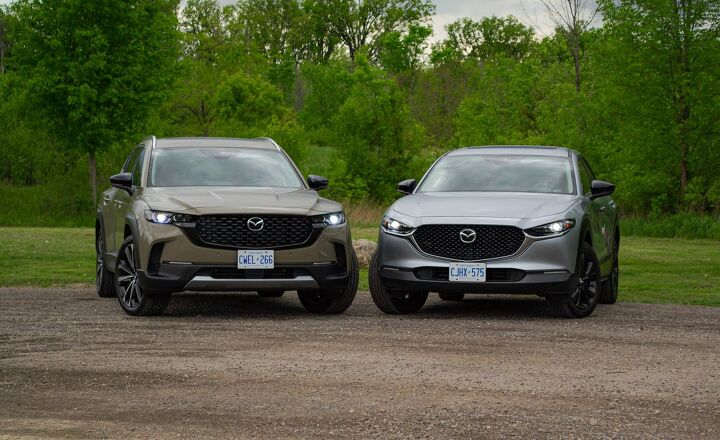
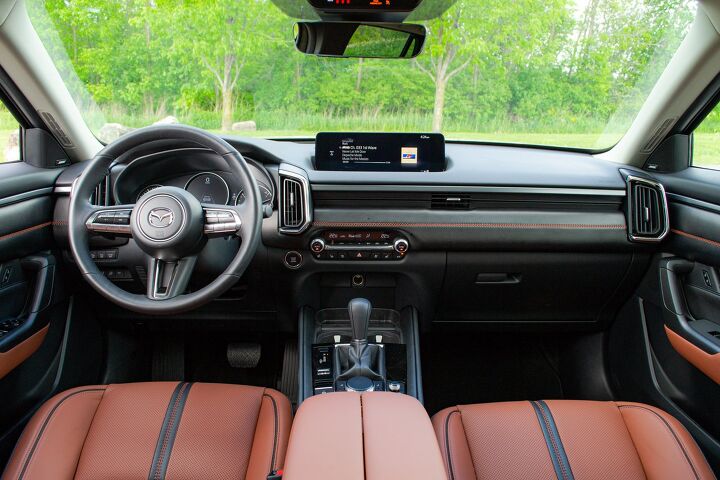































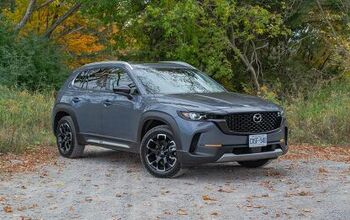
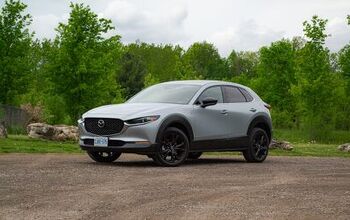
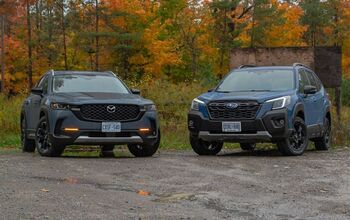
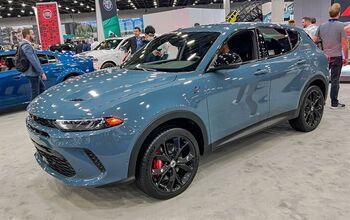
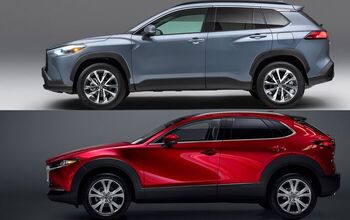
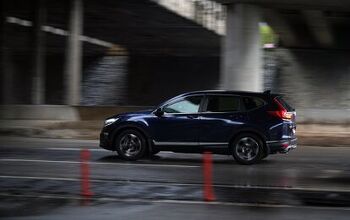
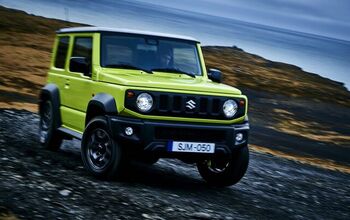
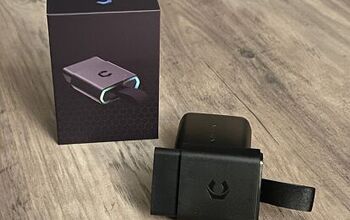




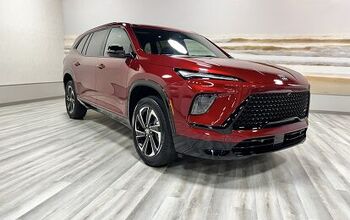
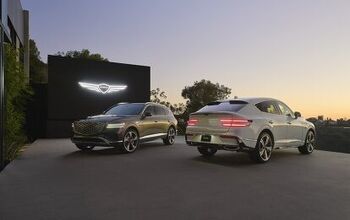

Comments
Join the conversation
2023 Black Cx30
I love my poly-metal CX-30; just got 36.5 MPG on 2400 mile trip to and around Denver. If only my golf clubs sat lengthwise..........